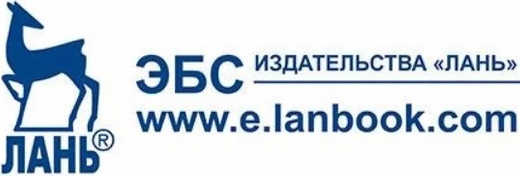QUASILINEAR DIFFERENTIAL EQUATIONS FOR THE DESCRIPTION OF THE SPACE OF IDEAL GAS CONDITIONS
Abstract
Relevance
Today the classical thermodynamics as fundamentals of many physical sciences does not possess the finished and accurate axiomatic creation of the theory. Its many provisions and ratios are based on the empirical facts which are recognized as apriori and are not proved in terms of theoretical parcels.
Problem
In this paper the problem of a wording of thermodynamic provisions and ratios for spaces of ideal gas conditions is considered on the basis of analysis of solutions of partial differential equations of the first order.
Methods
In this work the method of characteristics for the solution of the quasilinear differential equations of the first order was used. And also formulas and dependences of differential geometry and means of computer mathematics are applied.
Results
It is shown that characteristics of partial differential equations are connected with entropy as a thermodynamic function of condition. Geometric presentation of the received integrated surfaces is executed. The connection between physical content of thermodynamic sizes (temperature, entropy, energy) and their mathematical analogs is established. By numerical methods using the means of computer mathematics it is illustrated the possibility of establishing consistent patterns of implementation of thermodynamic processes and cycles at the description them as functions of time.
Conclutions
The assumption is formulated that irreversibility of thermodynamic processes can be connected with temporal features of implementation of these processes. The offered approach allows to give simple geometric interpretation of basic provisions and ratios of classical thermodynamics.
















While nobody left any comments to this publication.
You can be first.
1. Averin G.V. Sistemodinamika [Systemdynamics]. Doneck: Donbass, 2014. 405 р. (in Russian)
2. Afanas'eva-Jerenfest T.A. Neobratimost', odnostoronnost' i vtoroe nachalo termodinamiki [Irreversibility, unilaterality and second law of thermodynamics]. Zhurn. prikl. Fiziki. Т. 5, Issue 3–4 (1928). C. 3–28. (in Russian)
3. Bazarov I.P. Termodinamika [Thermodynamics]. Izd. 4-e. M.: Vysshaya shkola, 1991. 376 p. (in Russian)
4. Born M. Kriticheskie zamechanija po povodu tradicionnogo izlozhenija termodinamiki. V kn.: Razvitie sovremennoj fiziki [Critical remarks concerning a traditional statement of thermodynamics. In book: Development of modern physics]: Per. s nem. M.: Nauka, 1964. Pp. 223–256. (in Russian)
5. Guhman A.A. Ob osnovanijah termodinamiki [About the thermodynamics bases]. M., Jenergoatomizdat, 1986. 383 р. (in Russian)
6. Zvyagintseva A.V., Averin G.V. Integrirovanie otdelnyih mnogomernyih uravneniy Pfaffa imeyuschih vajnoe prikladnoe znachenie [Integration of some multidimentional Pfaff equations of important applications] // Nauchnyie vedomosti Belgorodskogo gosudarstvennogo universiteta. Seriya Matematika. Fizika. №27 (248). Vyipusk 45 (2016). Pp. 102 – 114. (in Russian)
7. Karateodori K. Ob osnovah termodinamiki. V kn.: Razvitie sovremennoj fiziki [About fundamentals of thermodynamics. In book: Development of modern physics] Per. s nem. M.: Nauka, 1964.Pp. 188–222. (in Russian)
8. Koshlyakov I.S. Uravneniya v chastnyih proizvodnyih matematicheskoy fiziki [Partial Differential Equations of Mathematical Physics] M.: Vischa shkola, 1970. 712 р. (in Russian)
9. Mlodzeevskij A.B. Geometricheskaja termodinamika [Geometrical thermodynamics] M.: Izdatelstvo MGU, 1956. 94 p. (in Russian)
10. Petrov N., Brankov J. Sovremennye problemy termodinamiki [Modern problems of thermodynamics] M.: Mir, 1986. 285 p. (in Russian)
11. Prigozhin I., Kondepudi D. Sovremennaya termodinamika [Modern thermodynamics]. Per. s angl. M.: Mir, 2002. 461 p. (in Russian)
12.Roberts D. Teplota i termodinamika [Heat and Thermodynamics] Per. s angl. pod red. Vukalovicha M.P. M.: Izdatelstvo tehniko-teor. literaturyi, 1950. 592 p. (in Russian)
13. Frankfurt U. K istorii aksiomatiki termodinamiki [In history of axiomatics of thermodynamics. In book: Development of modern physics] V kn.: Razvitie sovr. fiziki: Per. s nem. M.: Nauka, 1964. Pp. 257–292. (in Russian)
14. Shevtsova M.V., Averin G.V., Zvyagintseva. 2016. K voprosu obosnovaniya polojeniy termodinamiki metodami differentsialnoy geometrii mnogomernyih prostranstv [About justification of provisions of thermodynamics by methods of differential geometry of multidimentional spaces] // Nauchnyie vedomosti Belgorodskogo gosudarstvennogo universiteta. Seriya Matematika. Fizika. №27 (248). Vyipusk 45 (2016). Pp. 36 – 44. (in Russian)
15. Zvyaginceva A.V., Averin G.V. Integrirovanie otdel'nyh mnogomernyh uravnenij Pfaffa imeyushchih vazhnoe prikladnoe znachenie [Integration of some multidimentional Pfaff equations of important applications] // Nauchnye vedomosti Belgorodskogo gosudarstvennogo universiteta. Seriya Matematika. Fizika. №27 (248). Vypusk 45 (2016). Pp. 102– 114.
16. Averin G.V., Zviagintseva A.V., Shevtsova M.V. and Кurtova L.N. Probabilistic methods of a complex assessment of quantitative information // Research Journal of Applied Sciences 11 (7), 2016. Pp. 415 – 418.
17. Gyarmati I. On the Fundamentals of Thermodynamics // Acta Chim. Hung. 30, 1962. Pp. 147- 206.
18. Landsberg P.T. Main Ideas in the Axiomatics of Thermodynamics // Pure and Appl. Chem. 22, 1970. Pp. 215-227.
19. Lieb E. H., Yngvason J. The physics and mathematics of the second law of thermodynamics // Physics Reports. Vol. 310. № 1. 1999. Pp. 1 – 96.
20. Falk G. and Jung H. Axiomatik der Thermodynamik // Hdb. Phys. III/2. Berlin, 1959. Pp. 119–175.